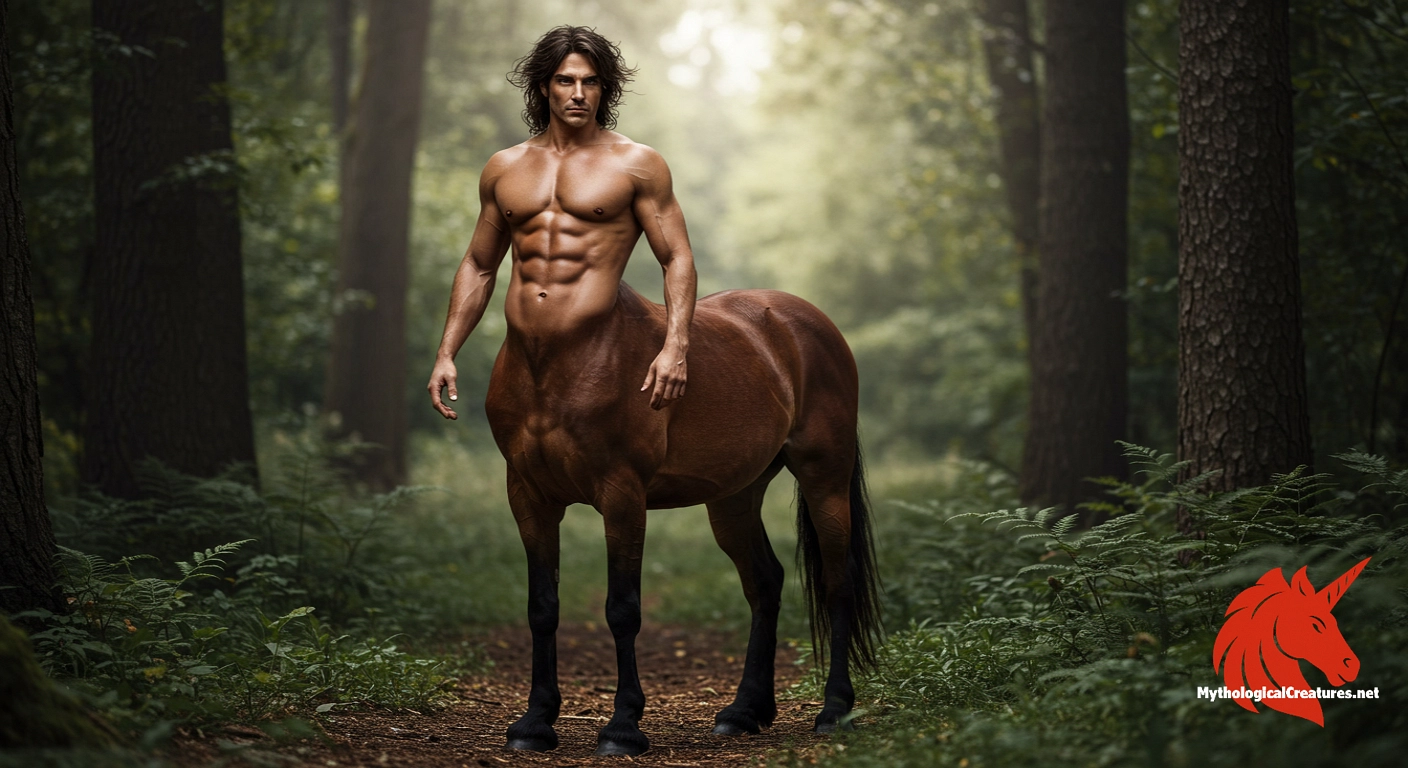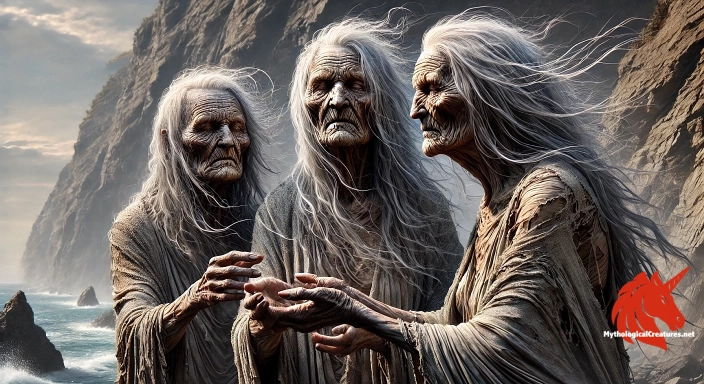Centaur: The centaur is a mythological creature featuring the upper body of a human and the lower body of a horse.

Centaur
Centaur - Centaur lore symbolises the conflict between rational human traits and untamed natural instincts.
Origins & First Encounters
Centaur is a striking figure from ancient myth whose existence blends the refined characteristics of humanity with the untamed spirit of the natural world. Born from the fertile imagination of early Greek civilisation, this creature embodies a unique duality that has captured the attention of storytellers for millennia. Its story is deeply entwined with the early traditions of Hellenic culture, where myth and human experience met on the threshold of civilisation and wilderness. Emerging in a period where divine influence was often interlaced with mortal experiences, centaurs symbolise the struggle to harmonise intellect with raw instinct. The legends sometimes trace their ancestry to figures such as Centaurus or Ixion, further linking them to heroic and fabled lineages. Their narrative reflects complex social and cultural dynamics, where the tension between order and chaos is rendered in a living, breathing form. Many depictions evoke a sense of both admiration and trepidation, as these beings demonstrate feats of strength mingled with moments of wisdom and guidance. Their enduring presence in myth has ensured that centaurs remain a potent symbol of the conflict and complementarity of human nature. Their early attestation in visual and oral traditions continues to inspire a wealth of artistic and literary representations. In essence, the centaur captivates our imagination by narrating the timeless dialogue between civilisation and the wild.
Source Texts & Tale Variants
The centaur myth is conveyed through a variety of ancient texts and oral traditions that have been passed down throughout time. Early Greek literature provides numerous accounts that portray these beings in roles as varied as wild marauders to sage mentors. Classical poets and dramatists interwove centaurs into epic narratives, offering both dramatic conflicts and moments of reflective wisdom. Alternate story variants emerged over the centuries, some focusing on the savage qualities of the centaur race while others elevate individuals such as Chiron into the realm of celebrated pedagogy. These diverse retellings reveal a flexible myth that adapted to the moral and social values of different periods. In some narratives, the centaur is depicted as a fearsome adversary in battle, while in others, their more thoughtful, measured characteristics are celebrated. Oral traditions across various regions contributed additional layers of meaning, suggesting that the creature’s dual nature resonated with different audiences. The multiplicity of sources allowed for creative reinterpretation, ensuring that the centaur myth was as much a living tradition as it was a static legend. Through fragments of ancient art, literature, and ceremonial lore, the centaur has stepped through the centuries enriched with various story nuances. This complex heritage continues to fuel modern fascination and scholarly debate alike.
Form & Powers
Centaurs are rendered as an extraordinary anatomical fusion, where the upper body of a human seamlessly merges with the lower body of a robust horse. Their human torso is frequently depicted with a sculpted form, expressive features, and a level of refinement that contrasts sharply with the primal qualities of the equine half. The lower portion, consisting of powerful, muscular legs and a graceful, yet steadfast body, conveys immense strength and agility. Artists have often captured the fluid transition between these two distinct forms, highlighting the natural harmony of flesh and muscle. The physicality of a centaur is accentuated by the clear demarcation yet seamless union of human intellect and animal vigour, reflecting an innate duality in appearance. Depending on the storyteller’s focus, some centaurs are portrayed with a rugged, battle-worn look, while others exhibit a more noble and refined elegance. Distinctive features such as a flowing mane and defined musculature on the equine side are common, contrasting with the thoughtful countenance of the human upper portion. Variations in size and physique lend depth to their portrayal, emphasising both the aesthetic and functional aspects of the hybrid body. The careful depiction of each element results in a character that is both visually captivating and symbolically resonant.
Regional Faces
The myth of the centaur takes on unique flavours as it passes through different cultural and geographical contexts. In the lush and rugged landscapes of Thessaly, where many of these legends first emerged, centaurs are celebrated as beings that embody the wild spirit of nature. Local traditions from regions such as Magnesia, Mount Pelion, and the Foloi oak forest lend the centaur an air of regional specificity, with attributes that reflect the natural surroundings. In some local narratives, their untamed manner and affinity for rustic terrain evoke the raw beauty and peril of the wilderness. Artistic depictions in these locales emphasise a sense of territorial pride, with natural motifs that allude to ancient rites and pastoral life. As the myth spread, variations arose that underscored differences in cultural values, from ferocity in one area to wisdom and mentorship in another. These regional adaptations illustrate how communities reinterpreted the centaur to align with local customs and environmental rhythms. The rich diversity in depiction mirrors the multifaceted cultural identity of the areas in which the centaur legend was adapted. Such transformations in character placement allow the myth to persist as a living tradition, responsive to the nuances of place and time. The regional retellings, therefore, highlight the versatility of the centaur myth as it negotiates the boundaries between universality and local specificity.
Cultural Parallels
The centaur stands as a prime example of a mythological figure whose dual nature finds echoes in many world traditions. Its amalgamation of human intellect with animal prowess invites comparisons with other hybrid beings, such as satyrs and fauns, which also straddle the line between cultivated civilisation and untamed wilderness. In various mythological frameworks, comparable creatures serve as symbols for the inherent conflict between rationality and instinct, underscoring a universal theme. In some Eastern traditions, similar hybrid forms emerge as guardians of nature or as liminal figures inhabiting the interface between worlds. This cross-cultural resonance underscores the centaur’s role as more than merely a creature of ancient lore; it is an emblem of the complex interplay between reason and raw emotion. Such mythic archetypes are recurrent motifs that speak to the multifaceted nature of existence, occupying roles that range from nurturing guides to fearsome adversaries. The centaur, in its many incarnations, mirrors humanity’s own struggles to reconcile these divergent forces. This symbolic parallel extends even into modern storytelling, where the centaur sometimes represents internal conflict or the balance of competing personal traits. In drawing these comparisons, one can trace a lineage of mythic hybrids whose very structure illuminates persistent human concerns. Thus, the centaur not only belongs to the realm of Greek mythology but also to a broader tapestry that spans diverse cultures and epochs.
Legacy & Modern Evolution
The evolution of the centaur myth illustrates a remarkable journey from ancient narrative to modern cultural icon. Originally depicted as fierce symbols of nature’s untamed energy, centaurs gradually assumed more layered identities that encompassed wisdom, mentorship, and even melancholy. Over the centuries, their portrayal transformed through artistic reinterpretations from medieval bestiaries to the vibrant canvases of the Renaissance. Modern fantasy literature and cinema have embraced the centaur, reimagining it in roles that balance the raw and the refined within the human psyche. Contemporary adaptations often explore the centaur as a metaphor for internal dualities, reflecting modern dilemmas about civilisation versus instinct. This dynamic evolution highlights a shift from mere physical hybridisation to a deeper exploration of character and symbolic meaning. As society’s values change, so too does the centaur, with depictions oscillating between heroic guidance and wild unpredictability. Its presence in video games, novels, and films underscores a lasting influence that resonates with both ancient allegory and current cultural debates. This transformation mirrors broader changes in storytelling, where every generation reframes myth to address its own contextual challenges. The centaur’s enduring legacy, therefore, attests to its capacity to adapt and remain relevant as a symbol of the intricate dance between the rational and the primal.
Interesting Fact
One of the most famous centaurs, Chiron, is celebrated for his wisdom and his role as a mentor to several Greek heroes, setting him apart from his more unruly kin.
Quick Creature Info
Origin:
Features:
Associations:
Our Mythic Legendary Rating:

Also Sometimes Known As:
Habitat:
Supernatural Powers:
Physical Attributes:
Abilities:
Behavior:
Weaknesses:
Lore:
References
Discover Another Mythical Legend You May Not Have Heard Of?
Uncover the mysteries of ancient folklore and expand your knowledge of legendary beings from cultures around the world.
Dare to Meet the The Graeae....
Mythical Disclaimer: The images and data on this site are derived from various historical and literary sources, but we have found that many myths often have multiple versions and interpretations across references, sometimes contradictory. As a result, these creature depictions are artistic interpretations—imaginative blends of folklore, legend, and a dash of AI guesswork. Because creature descriptions vary widely, our illustrations and accompanying information represent our best effort to honor mythology while bridging creative gaps. Enjoy these interpretations—just remember, we've done our best to respect the stories and validate available data, but in the realm of mythology, details often shift, imagination leads the way, and nothing is ever set in stone!
Curated by the Mythological Creatures Team (rev. May 2025)
